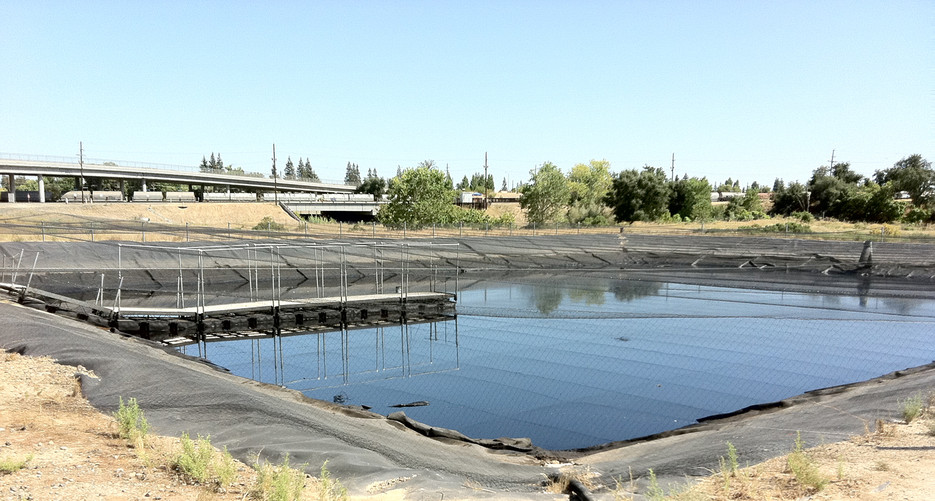Pond Netting: Protecting People, Birds, Water, and Investments
Pond netting protects people, water sources, and migratory birds from some of the potentially harmful effects of development and industry. Governed by the oldest wildlife protection laws in the country, the Migratory Bird Treaty Act, was established in 1919, protects birds from human activities. Here are a few ways pond netting can be used to protect water supplies, people, birds, and pocketbooks.
Protect Water
Development changes the land. It may mean more retail establishments, single family homes, and streets. Each of those things are harder than what was likely there before—spongy soil, trees, and plants. When it rains, less water soaks into the soil, and more runs into waterways and streams at a faster rate than it did before man planted development.
The faster moving water into streams and other waterways can carry pollutants, like sediment, fertilizers, grease and oil, and bacteria from pet waste. Detention ponds may look like lovely water features, but they also serve an important purpose—maintaining natural water sources and protecting wildlife and the habitats near streams.
Though basins protect water sources downstream by slowing the rate of runoff from neighborhoods, office parks, and other development, what protects a detention basin or other manmade water feature?
Protect People
Geese are often attracted to detention basins and other manmade water features. However, their presence isn’t always welcome. Bird droppings in a detention pond can create environmental concerns, because their presence increases levels of fecal coliform in detention ponds. And just as the detention ponds are there to protect water runoff, what’s in the pond itself can cause problems further downstream.
When a stream is polluted with disease causing pathogens, that can be detrimental to human health. Geese excrement contains a number of pathogens capable of infecting humans. For example, geese may play a role in transmitting the parasites Crytosporidium and Giardia. Scientists have also found E-Coli and Listeria in geese droppings.
There are also other frequent and unwelcome guests at manmade water features, like detention basins or even swimming pools and golf courses. Though they can be pretty, and often semi-domesticated, many avians live on fresh and salt water and dive to feed on insects and fish. Just like geese droppings, other bird droppings carry many germs that can infect humans. One particular fear of disease experts is avian flu. While not all avian flus can be transmitted to humans, they can and have caused serious infections and even death.
In short, whether it’s a concern about water quality or just general health, maintaining some space between bird populations and humans is just the smart thing to do!
Protect Wildlife
Humans aren’t the only ones potentially endangered when man and wildlife come into contact. Migratory birds are at risk of injury, illness, and even death when they land in some retention ponds, especially retention ponds on industrial properties. These ponds can be contaminated with oil or other items detrimental to avian health.
Every year, thousands of migratory birds land on industrial ponds or tailings thinking they’ve found a new freshwater haven. Unfortunately, many of these ponds are filled with manufacturing byproducts like bitumen, naphthenic acids, and heavy metals. When the birds take a sip, they ingest the deadly toxins.
Protect Investment
There are a number of state and federal laws that protect migratory birds, and there are treaties, particularly between the U.S. and Canada, designed to protect these birds as they travel across the North American continent. Running afoul of the laws or the treaty can lead to hefty fines. For example, oil lease operators can face fines if they open tanks or pits which result in the accidental death of some migratory birds.
Fines, lawsuits, and losses due to poor public relations can add up. For example, an Arizona company was forced to pay more than $100,000 in fees and fines after it caused the deaths of birds.
Keeping migratory birds away from places they don’t belong is the humane thing to do. In many instances, it’s the legal thing to do, and it’s also the business savvy thing to do.
Prevention
So, how do developers, manufacturers, and industrialists keep birds from setting up shop on their retention or tailings ponds?
One solution to keeping birds away from retention ponds and other water collection sites is by covering the water surface with heavy-duty industrial pond netting. Netting acts as a physical barrier that humanely prevents birds from landing on the water. If they never land in the first place, they won’t be subjected to the harsh chemicals that can be found in most tailing ponds.
Industrial pond netting is an effective and efficient method to keeping birds away from water sources where they don’t belong. The netting, available in a variety of sizes and lengths, is made of strong nylon knotted mesh. In many states, bird netting is the only way to economically and reasonably meet guidelines for protecting birds.
In fact, the U.S. Fish and Wildlife service says installing pond netting is the best approach industrial companies can take in order to comply with the U.S. Migratory Bird Act Treaty.

